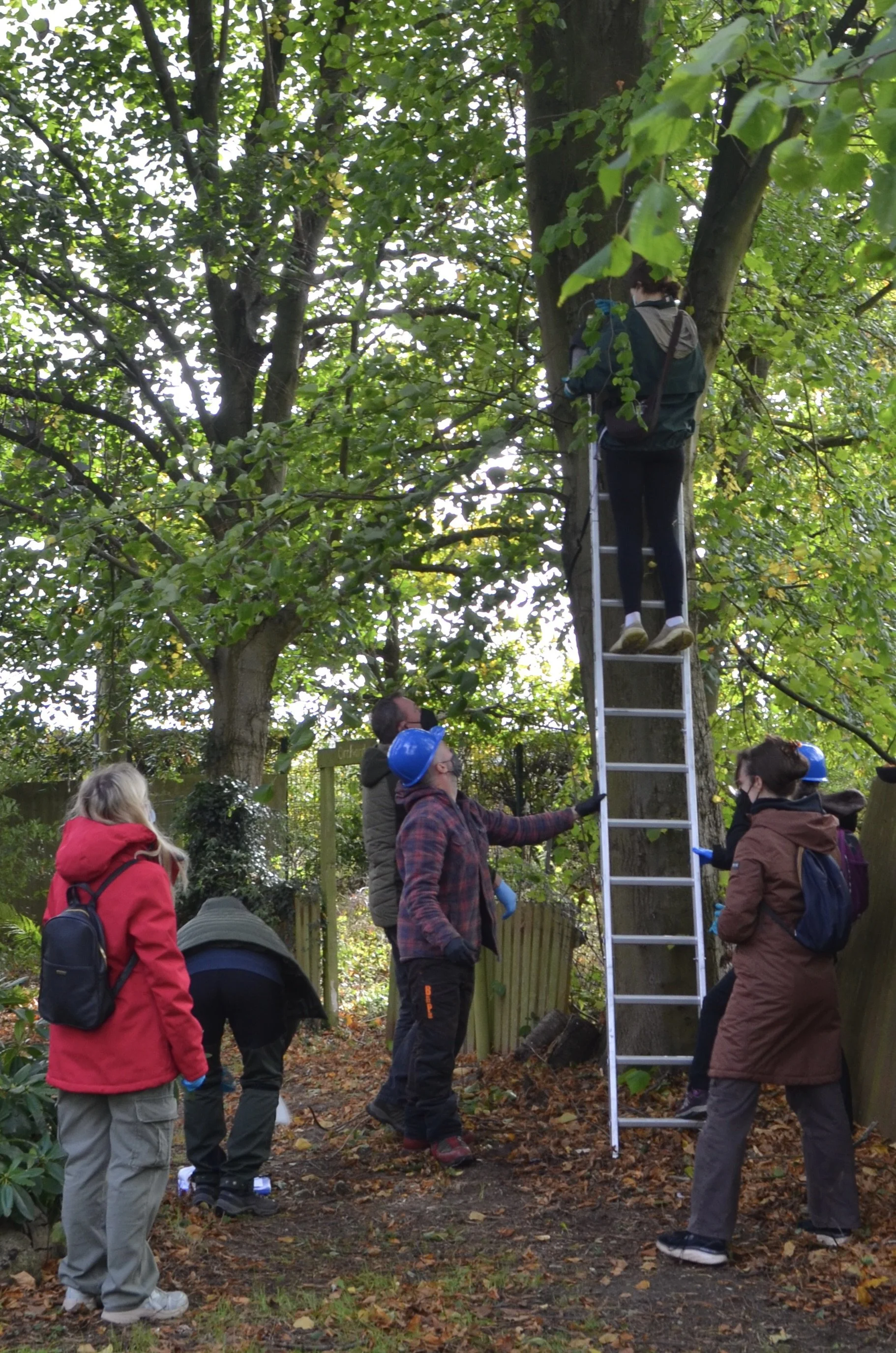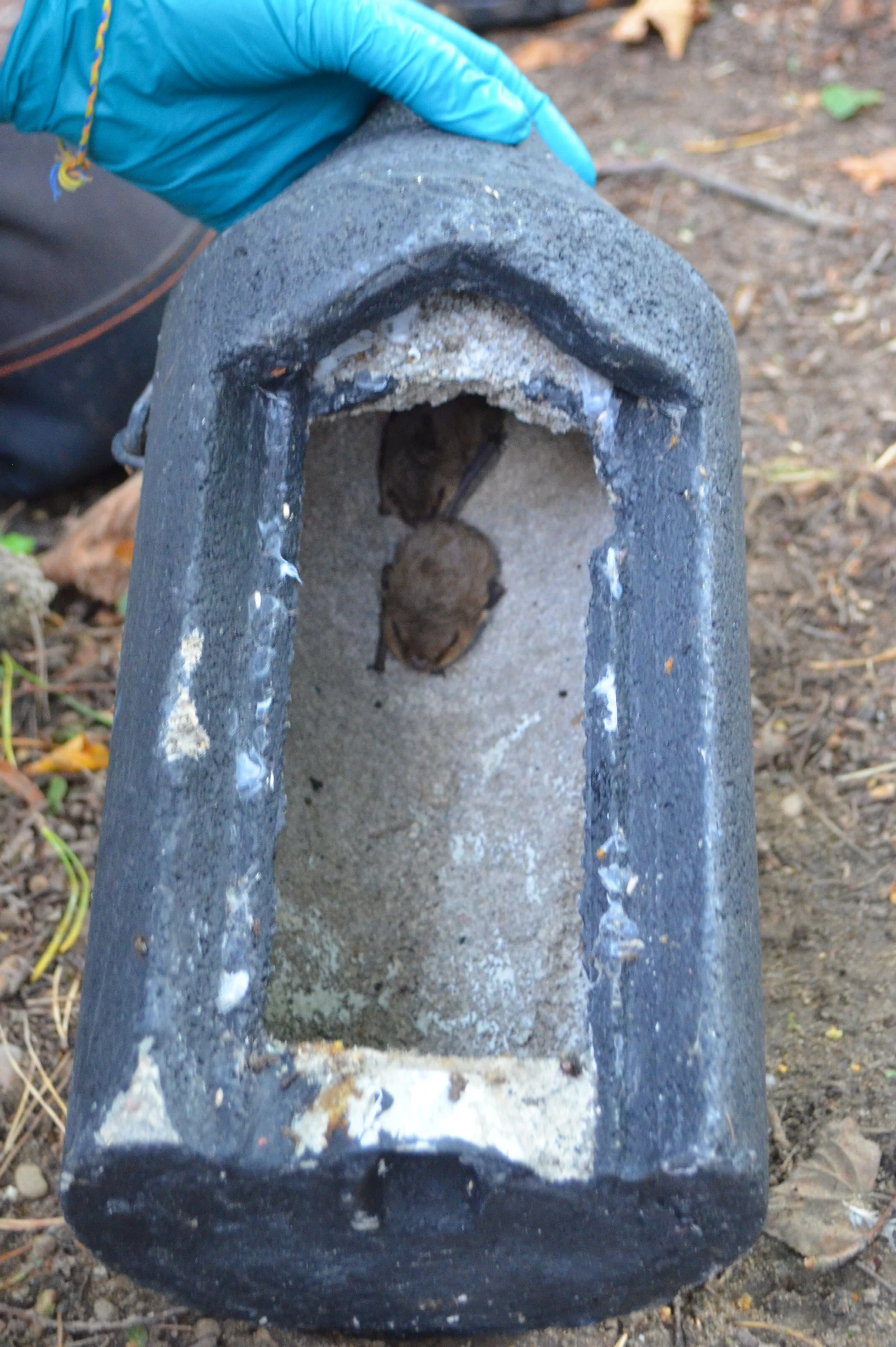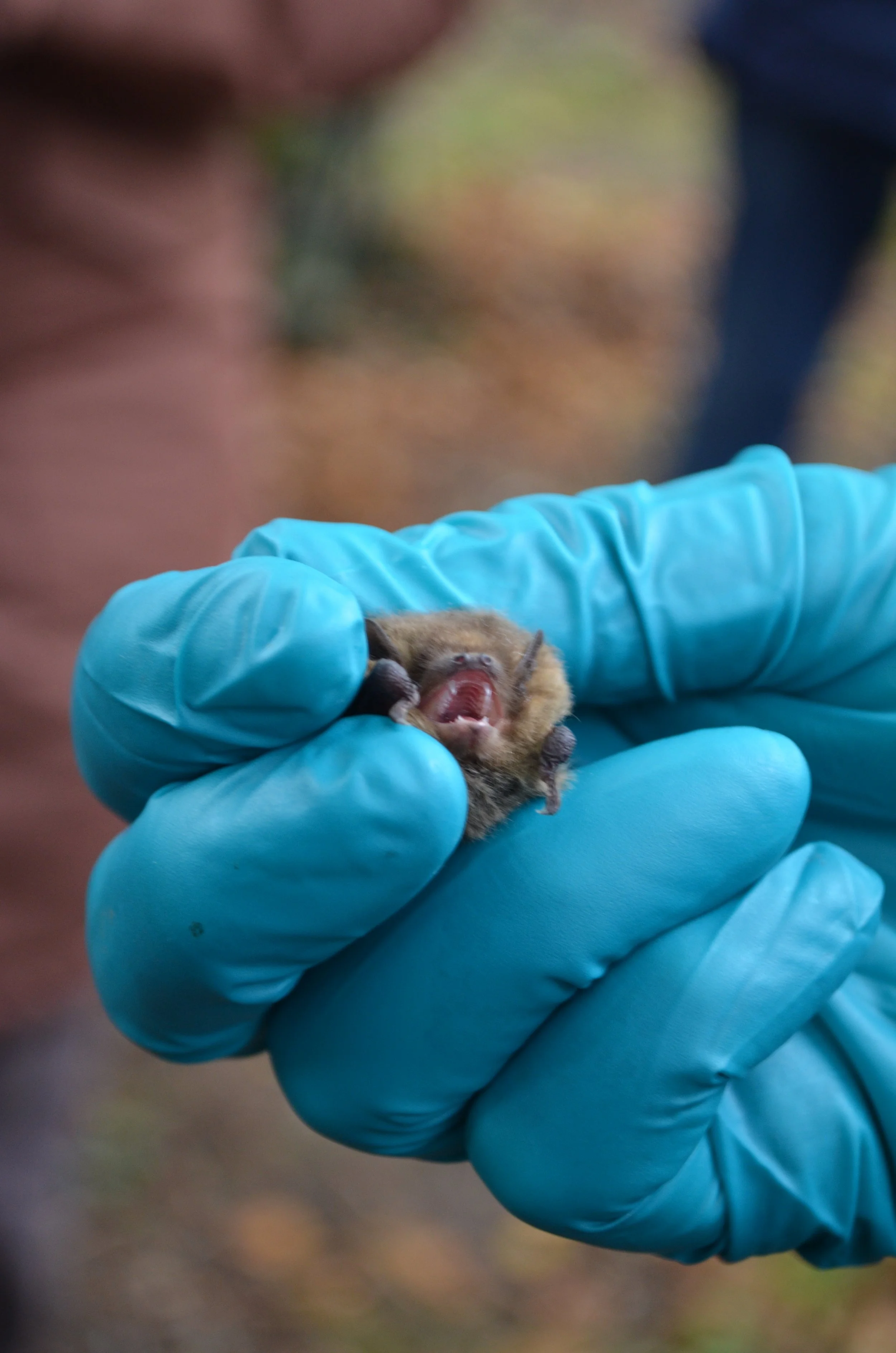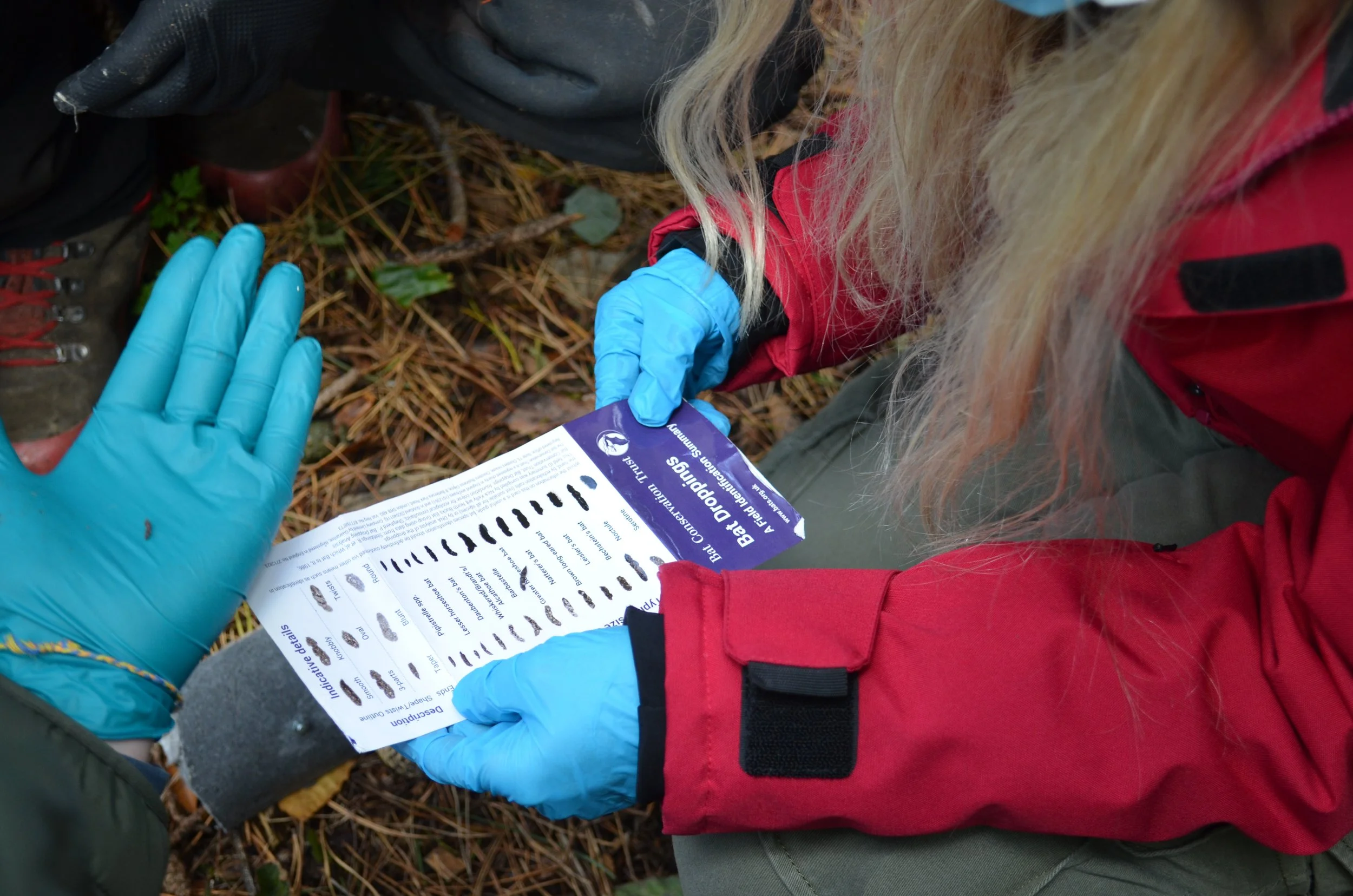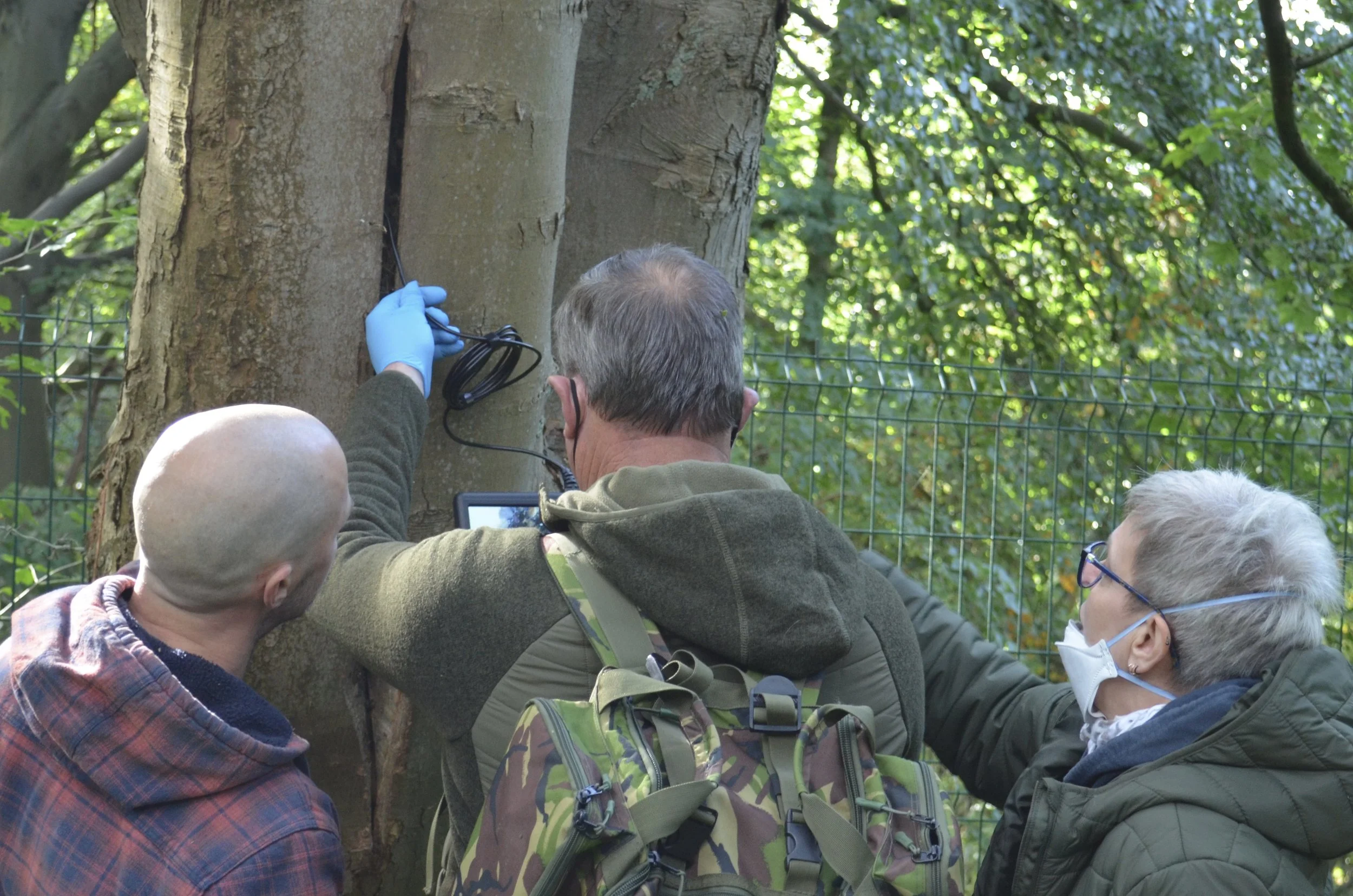Bats..
During the spring of 2024, a bat survey found eight bat species using the garden. We sited bat boxes around the garden in November of that year.
Checking a bat box.
Today we had the great pleasure of welcoming back our friends from Nottinghamshire Bat Group (NBG) to check the boxes and also to see what progress there had been with the features that they had created in trees for bats. Less than a year in bat time is not long: sometimes bats take many years to adopt boxes.
Soprano pipistrelle bats roost in bat box.
Success!
Soprano pipistrelle bat. Bat handlers need special licences, must wear mask and gloves and also have had vaccinations to prevent catching bat diseases. Those handlers with covid infections are not allowed to handle bats.
We found evidence of brown long-eared bats using one of the boxes. And even more exciting to discover one male and four female soprano pipistrelle bats all tucked up in another box!
Bat droppings are important aids to identification.
The features that a group arborist created were around 1.5 metres above the ground. They were checked and found to already have had invertebrate residents. There was also the suggestion of a treecreeper nest. The treecreeper is an elusive little bird and we’re delighted that there may be evidence of successful use. The tree features will eventually heal, leaving a wide opening to a cavity behind the closed wound creating optimal conditions for bats.
Using an endoscope to check possible bat roost in newly-created features.
In the winter we hope to persuade NBG to return to create features higher in the trees.

